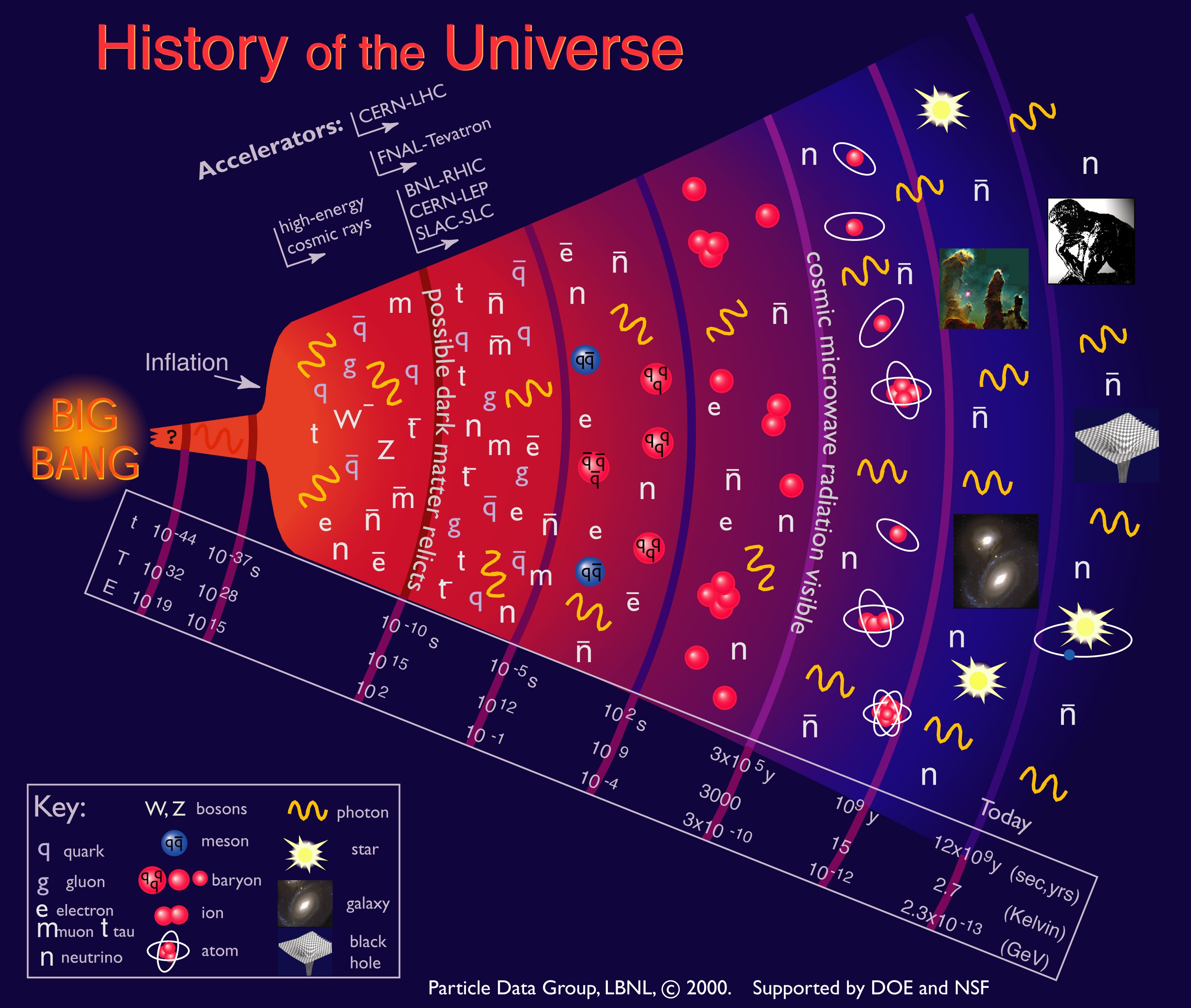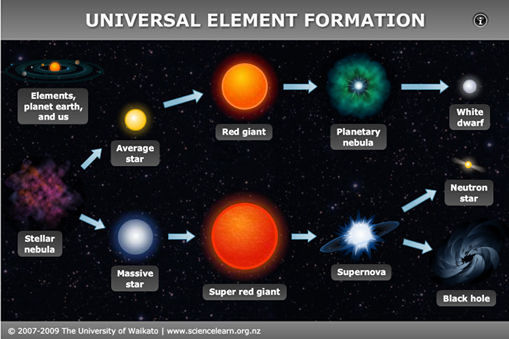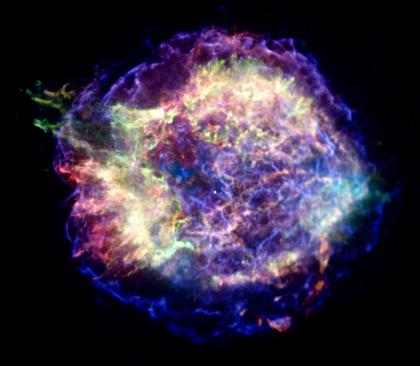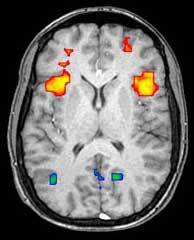What Makes a Cancer Cell
While it could be considered cliché to compare cancer cells to supervillains, the similarities are undeniable. Supervillains are cunning, deeply rooted within their far-reaching schemes, and fearsome to the extreme. Cancer cells are just as sly, difficult to remove from the human body and terrifying to the afflicted and their loved ones. It’s not hard to visualize cancer cells as the shady criminal syndicate of the human body; their reach extends to the lungs, bones, tissue and bloodstream, and their tactics are ruthless. Make no mistake—cancer cells have long been antagonists to the scientists fighting for a cure and the patients fighting for their life.
But when it comes down to the science of it, cancer cells differ from many classic villains in that they aren’t innately evil. Rather, cancer cells and their dangerous properties originate from chance mutations during the division of normal cells. Mutations explain a lot of strange phenomena, from unexpected eye colors to increased resistance to diseases. These unexpected changes in gene sequences can be harmless, or even beneficial. However, they have an equal chance of damaging DNA, mutating it in such a way that the cell distorts into fast-splicing cancer cells.
Usually, mitosis—the process in which a cell divides—takes precautions against such mutations. “Checkpoints” during a cell’s growth period scan for identity-changing DNA mishaps, ensuring things are running as expected. If something is wrong, the cell will stop growing; if the damage to the DNA can’t be repaired, the cell will kill itself in a process called apoptosis. Through such self-sacrificing vigilance, cells that are mutated beyond repair never get the chance to multiply into a runaway number of damaged cells. But sometimes cell mutations go undetected, due to the sheer number of cells within the human body, with its trillions of constantly dividing cells, each with their own double-helix sequences and enzyme and lysosomes. In such a rush, a handful of mutations can slip by even the strict quality standards cells hold to themselves. Many of these mutations go undetected because they’re harmless to the identity of that cell—but some aren’t so benign.
When a cell with damaged DNA successfully slips by and divides, it creates the first two in a series of cells that will rapidly divide and spread incorrect DNA, beginning the first rapidfire stages of cancer. The speed of growth and division of cancer cells is unmatched, and unyielding; a cancer cell’s daunting ability to keep multiplying without ever dying, as normal cells do, is often referred to as ‘immortality’. This trait is due to two substances within the cell in particular: telomere and telomerase.
Telomere is a repeating DNA sequence that essentially acts as a cap for the chromosome it’s on. The sequence acts as a buffer between valuable DNA sequences within the chromosome and the often messy process of dividing a cell. Without the telomere, the ends of the chromosome would lose important base pairs much like a rope fraying at the ends. The more a cell divides, the more telomere is lost in protecting the chromosome. Once all of the telomere is gone, the chromosome reaches “critical length” and no longer replicates. When this happens, the cell doesn’t divide and dies through apoptosis. The erosion of telomere thus measures the age of a cell, with long telomere sequences indicating young cells and short sequences indicating old ones.
To restore and keep the cycle of cells replicating in our body, telomerase is needed to extend the eroding telomeres. Telomerase is an enzyme made of proteins and RNA. As an enzyme, telomerase enables certain reactions that couldn’t happen without it—in this case, rebuilding and elongating telomeres to a longer sequence again. Telomerase is sparingly used in somatic, or body, cells, which comprise most of the human body. As a result, humans age without much interference from telomerase.
While telomerase is rarely active in normal body cells, the enzyme becomes ten to twenty times more active in cancer cells. The abundance of telomerase gives cancer cells an endless supply of telomere, and with it, the ability to multiply indefinitely.
In addition to ‘immortality,’ cancer cells have several additional unique properties that explain why finding a cure is proving so difficult. In addition to fast replication, cancer cells don’t undergo apoptosis easily; high levels of survivin, a protein, inhibits the usual method of cell death. Cancer cells need neither the physical space nor the same amount of nourishing chemicals, known as growth factors, that normal cells need. Instead, they pile freely on top of each other, and remain undeterred by a diet on growth factors. The clusters cancer cells often find themselves in form the lumps within the breasts and testes that doctors and outreach campaigns warn about. Despite their ability to clump, cancer cells have unfortunately high mobility, too. While normal cells anchor themselves onto neighboring cells, cancer cells can break away and travel through the body, infecting other organs. Their ability to invade and infect other areas is made possible through the ability to break through the lamina. The lamina is a noncellular shield that protects the tissues, organs and surfaces within the human body, deflecting normal cells with ease. Cancer cells don’t have the same limitation, and spread to different organs with relative ease.
With its unique properties, cancer remains frustratingly difficult to cure. Treating cancer needs to somehow overcome the mobility and speed of replication cancer cells exhibit. Current treatments for cancer actually do better than that—the chemotherapy method of treatment uses the cancer cells’ speedy multiplication against it. Chemotherapy sends chemicals throughout the body that kill fast-replicating cells. Cancer cells are efficiently targeted and wiped out through this method, being some of the fasted replicating cells in the body.
However, chemotherapy has serious faults in its accuracy; by targeting fast-replicating cells, chemotherapy hits hair and blood cells particularly hard. A broad swath of helpful cells get caught in the crossfire between chemotherapy and the cancer cells it’s meant to target. As a treatment for cancer, chemotherapy can cause hair loss, amongst other more painful side-effects.
Other treatments are available, when cancer cells are concentrated in specific parts of the body. Radiation focuses on a single area, maybe one organ, to destroy cancer cells. When cancer cells are concentrated in a single area, forming a tumor, surgery can excise the infected part. Sometimes, a mixture of the three treatments are required to treat a patient.
There is still no way to accurately target and eradicate cancer cells without collateral damage. For that reason, and for the growing number people with breast cancer, leukemia, and other forms of cancer, research for better treatment and ultimately a cure is incredibly important. Cancer is internal, deadly in its silent machinations and intimidating with its arsenal of lethal properties. It’s up to the bright minds and generous hearts of every scientist, doctor, donor and activist to combat, quite literally, the enemy within.
—
Interested in cancer cells and what scientists are doing to treat it? Come see Dr. Brad A. Stohr present “Why do Cancer Cells Grow Forever and Can we Stop Them?” Dr. Stohr will be presenting this Wednesday, April 17th, at the Marin Science Seminar. The Marin Science Seminar takes place during 7:30 to 8:30 p.m., in rm. 207 of Terra Linda High School. Come check out the Marin Science Seminar on our website and Facebook!
—
Sources:
- Gregory, Michael J. The Biology Web, Clinton Community College.
- “What Is Cancer?” Cancer.org, The American Cancer Society.
- Zaidan, George. “How do cancer cells behave differently from healthy ones?” Getting Under Our Skin, TED-Ed.
- “Facts about telomeres and telomerase.” Shay/Wright Laboratory, Southwestern University.
—
Sandra Ning
The Birth of the Universe, through Today’s Telescopes
A story is typically told from the beginning, but oftentimes the universe is an exception. As a society, time is measured in days and nights, hours, minutes, and seconds. But even more so, time is apparent to us through the peachy sunrise of dawn, the angry grumbles of an empty stomach at noon, and the fatigue that settles with the darkness of night. It’s hard to imagine any of these things in relation to the universe, with its sleepless planets and nomadic asteroids, all swallowed up in an unimaginably large blanket of space. If the universe is a story, and all the galaxies, comets, and stars its characters, where does it all begin?
Luckily, scientists have already delved into the origins of the universe, and have resurfaced with new and exciting insights regarding these questions. Dr. Mary Barsony, an associate professor of physics and astronomy at SFSU, has kindly answered several questions regarding the birth of the universe, the elements, and how scientists are researching it all.—
1. The Big Bang theory is the most widely-accepted theory for the creation of the universe. What kind of evidence have astrophysicists gathered to support this?
7. And what are protostars?
Sinkholes in Space: Black Holes!
The first thing young students learn about space in their science classes is that it is huge. Earth becomes a speck in the solar system, infinitesimally small compared to the hulking gas giants orbiting ponderously outside of the asteroid belt, and infinitely distant from the roiling surface of the Sun. The solar system becomes a speck in the eye of the Milky Way galaxy: the heat of the Sun, too bright for humans to even look at, becomes mediocre in the face of thousands of other brighter, white-blue stars dotting the galaxy. Red dwarves overshadow even the largest planet, Jupiter. Even the harmonic system of the Sun and its orbiting planets is just one out of an incredible number of star clusters, constellations, distant planets and binary stars that comprise our galaxy.
At the point when the solar system is only an afterthought on a distant arm of the Milky Way galaxy, and when the Milky Way becomes only one galaxy in an innumerable number within the universe, just about everyone begins to feel a little small.
The good news is that there’s something smaller than little Earth and its inhabitants out in space. What might be considered bad news is that these innocuous little phenomena are the sucking, inescapable vortices of extreme gravitational pull that inevitably show up in every science-fiction novel: black holes.
The smallest black holes are thought to be as small as a marble, or even an atom. Yet, packed within black holes, is compressed, super-dense matter that results in a gravitational field around it that is so strong not even light can escape its grasp— hence the black hole’s invisibility in front of the searching eyes of telescopes.
In actuality, the sizes of black holes fall into three categories: small, stellar, and supermassive. The smallest are thought to have formed during the birth of the universe, and pack literally tons of matter into areas that are very small. The result is, of course, the extreme density and gravitational field that characterize black holes.
“Stellar” black holes are about the size of a star, and can be up to twenty times the size of the Sun. These black holes form when very large stars collapse and create a supernova explosion. Gravity and atomic forces are always at odds around any object in space. The mass of the object creates a gravitational pull that acts on the object, but the object’s core atomic and nuclear energy are often stronger and allow the object to resist being crushed by its own gravity. At times, though, massive stars near the end of their lifespan don’t have enough thermonuclear force to resist the incredible force of gravity their mass gives them.
The star thus collapses under the force of gravity, and explodes in what is known as a supernova. Bits of the star’s gases go flying in this spectacular event, creating the fire-like nebulae observatories sometimes capture in photos. The rest of the collapsing star gets crushed by gravity into an area smaller than the massive star, but a mass similar to that of the massive star.
“Supermassive” black holes are, true to their name, incredibly large black holes that are often over one million times the size of the Sun. These black holes are, for reasons currently still being studied, found at the center of spiral galaxies; supermassive black holes are thought to be created around the same time the surrounding galaxy was formed. The supermassive black hole believed to be at the center of the Milky Way galaxy, known as Sagittarius A*, is as big as four million suns.
Black holes are not as sinister or dangerous as science fiction novels tend to suggest. Consider the universe as one, large fabric of ‘space-time,’ as Einstein imagined it. The Sun creates a sizable depression in the fabric with its mass, and the dip in the fabric is the gravitational pull that the orbiting planets around the Sun experience. Now, holding the same mass but with the volume of a penny, black holes are far smaller and far denser than the Sun. Placing one into the fabric of space-time creates a narrow, but deep depression in the fabric. This accounts for the inescapable gravitational force a black hole has. But outside of its narrow tunnel of gravitational pull, the fabric appears normal. In other words, gravity around a black hole is normal. Gravity only becomes an inescapable pull when matter passes the surface of the black hole—this point of distance to the black hole is known as the event horizon.
What matter gets sucked into is known as the singularity of a black hole. The center of a black hole, the singularity, is the point where matter is compressed into infinite density. The gravitational pull is infinite, and space-time ceases to exist meaningfully. All nebulae, planets, asteroids and stars that get pulled into the center of a black hole are crushed and exist in some timeless, spaceless, inescapable space purgatory.
Or do they? Beyond the event horizon of a black hole, scientists don’t really know for sure what happens inside of a black hole. Any foray into a black hole would never make it back to Earth, and the pull black holes have on light make it impossible for telescopes to study a black hole directly; scientists deduce the existence of black holes mainly through examining the orbits of objects in space around it. Because of this inability to study black holes more closely, black holes remain very mysterious.
Luckily for humankind, no black holes exist even close to Earth. It begins to feel a little luckier, sitting on the edge of the Milky Way galaxy, far away from the mysterious, roiling center where Sagittarius A* looms. But just considering their properties— a gravitational force that dominates even the speed of light, the spectacular origins of stellar black holes, and the curious centrality every supermassive black hole holds in each galaxy— it’s no wonder black holes capture the attention of scientists, authors, and the everyday student so easily. One might say that the study of black holes has at least metaphorically sucked in humankind.
—
Curious about black holes? Come join the Marin Science Seminar for Dr. Eliot Quataert’s presentation, ‘Black Holes: The Science Behind Science Fiction,’ tomorrow on Wednesday, March 13th. The Marin Science Seminar is located at Terra Linda High School, in room 207, from 7:30 to 8:30 p.m. Check us out on Facebook!
—
Sandra Ning
Fermi’s Eye on the Universe
Since their invention, telescopes have allowed humans to examine closely, and in more detail, the universe around them. Advances in optic technology have brought humans closer to understanding the microscopic world around us and the far-away mysteries above us. Telescopes like Hubble and Chandra directed into space have been sending back dazzling pictures of nebulae, galaxies and star clusters that are as beautiful as they are scientifically fascinating. Fermi joins the research team with new equipment: gamma- ray sensing technology.
Dr. Lynn Cominsky, who is the Department Chair of Physics and Astronomy at Sonoma State University, stopped to answer a couple of questions about her upcoming presentation on NASA’s Fermi Gamma-ray Space Telescope. She also lent her expertise to explaining the various, fascinating phenomena that occur out in the vast expanse of space.
—
1. What is the goal of the Fermi Gamma-ray Telescope mission?
From http://fermi.gsfc.nasa.gov/sci
Mission Objectives:
- Explore the most extreme environments in the Universe, where nature harnesses energies far beyond anything possible on Earth.
- Search for signs of new laws of physics and what composes the mysterious Dark Matter.
- Explain how black holes accelerate immense jets of material to nearly light speed.
- Help crack the mysteries of the stupendously powerful explosions known as gamma-ray bursts.
- Answer long-standing questions across a broad range of topics, including solar flares, pulsars and the origin of cosmic rays.
2. What sorts of cosmic substances/structures is Fermi looking for?
Most of the objects that Fermi sees are Active Galaxies which are aiming jets of gamma rays towards Earth (also known as blazars).
Fermi is also discovering many pulsars, gamma-ray bursts, solar flares, supernova remnants and a handful of other objects, such as high-mass binaries, novae and extended objects like the “Fermi bubbles.”
 |
|
Gamma-ray emissions around the Milky Way, detected by Fermi.
|
3. How are black holes formed? Why are supermassive ones, like Sagittarius A*, often (always?) at the center of galaxies?
We don’t know exactly how the supermassive black holes are formed. Current research indicates a correlation in size between the size of the galactic bulge and its black hole’s mass. This would indicate that both the BH and the galaxy were formed together, when structure
began to form about a 500 million years after the Big Bang. Supermassive BHs are always at the centers of galaxies, as they are the most massive objects in the galaxy.
4. What about white holes and wormholes? Are they purely theoretical,
White holes and wormholes are theoretically allowed by Einstein’s theory of General Relativity. However, we know of no earthly-substance that could go into a BH and come out a WH without being destroyed.
or even fictional?
White holes and wormholes are theoretically allowed by Einstein’s theory of General Relativity. However, we know of no earthly-substance that could go into a BH and come out a WH without being destroyed.
5. What are pulsars?
Pulsars are rotating cores of dead stars – about the size of a large city. They are formed when regular, massive stars end their lives in supernova explosion. The outer layers of the star are ejected out, while the inner layers collapse down to form the pulsar. They also have very strong magnetic fields, which channel the particles and gamma-rays in opposite directions.
6. And why are all of these high-energy phenomena of interest to researchers? How much (or perhaps, how little) do we know about these cosmic events that Fermi is looking for?
Researchers are excited to study the most exotic and energetic phenomena in the Universe – we cannot duplicate the extreme conditions on Earth that naturally occur in space. Extreme magnetic fields, strong field gravity, high temperatures – all are of interest to scientists, as we can test our laws of physics at these extremes.
7. How does gamma-ray detection help Fermi in its mission? Is Fermi the only telescope with gamma-ray detection at the moment?
Fermi is a gamma-ray telescope. So it must detect gamma rays in order to accomplish its mission. AGILE is a smaller telescope that was built and launched by the Italians, a few months before Fermi.
8. Aren’t gamma rays without mass? How exactly does Fermi detect gamma rays?
Gamma rays are the highest-energy form of light, and all forms of light are massless. Fermi has two instruments: the Large Area Telescope and the Gamma-ray Burst Monitor. Each detects the gamma ray light in a different manner.
You can read about the LAT here:
http://fermi.gsfc.nasa.gov/sci
You can read about the GBM here:
http://fermi.gsfc.nasa.gov/sci
9. As part of the public outreach program for Fermi, why do you believe its important for the public to know about projects
like Fermi?
Everyone is curious about the Universe – where we came from, where we are going, and are we alone? Fermi provides answers to some of these important questions. It is our job to explain Fermi’s amazing discoveries to the public.
—
Come see Dr. Cominsky present “Exploring the Extreme Universe with Fermi” on Wednesday, March 6th, in Terra Linda High School’s room 207. This month is Astronomy Month for the Marin Science Seminar. Check out our Facebook for more updates!
—
Sandra Ning
The Ocean’s Wilting Botanical Gardens
Almost everyone has seen a coral reef. Whether immersed in the warm waters of the tropics, or staring wistfully at the enticing commercials on television, the gently waving anemones and the masquerade of tropical fish have long been lauded as one of the most beautiful sights in the world.
However, the amount of healthy coral reefs is decreasing rapidly. Pictures of colorful corals populated with their lively inhabitants are becoming less and less representative as coral reefs are systematically destroyed worldwide. Images of barren seafloors, strewn with bone-white coral remains and not a single fish in sight are becoming more and more accurate.
So, why are coral reefs disappearing? Dynamite fishing, trawling, tourism, and global warming all take some responsibility.
Dynamite fishing is exactly what it sounds like—using explosives to stun and capture fish. It has a severe and very literal impact on coral reefs, blasting the polyps to shreds and reducing the homes of thousands of sea creatures to litter in seconds. The dangers of dynamite fishing (also known as blast fishing) are well known and outlawed in most countries, but the illegal practice remains predominant in several countries.
Trawling damages coral reefs in a similar manner. By dragging a net over the sea floor, fishermen get the fish they want—plus their coral-rock homes and all of their unhappy, inedible neighbors. By casting such a wide net, trawling not only bulldozes coral reefs away, but also threatens multiple fish populations as unwanted fish are dumped away or displaced.
Both of the aforementioned fishing practices are spurred by the immense seafood industry. In more developed countries, fish farms and specifically allotted areas for fishing manages overfishing problems and avoids damaging wild ecosystems. But in underdeveloped countries, where fishing is the only livelihood on the coast and equipment for more accurate, less invasive fishing practices is nonexistent, people turn to trawling and dynamite fishing. No one can blame them for needing to feed their family, but funding outreach programs can bring the technology and technical instruction countries need to stop destroying valuable ecosystems that sustain more species than classy couples eating out at their favorite upscale seafood bistro.
Tourism presents similar challenges. Though a lucrative business, (and sometimes a nation’s sole business), tourists may litter or “take souvenirs” from coral reefs. The upkeep of tourist towns, including waste from hotels and shacks selling tourist goods like painted starfish or other artifacts from the oceans serves to pollute/damage the coral reefs that sustain the entire business. Some areas have begun offering ecotourism as an alternative to the often harrowing consequences of mainstream tourism. Ecotourism differs from widespread tourism in that its goal is to not only tour beautiful sights, but to do so in a non-intrusive way. Ecotourism also aims to educate tourists in environmental conservation, respect for cultural heritage, and other methods and attitudes in which people can preserve the natural wonders of the world.
Global warming, which has already affected yearly temperatures, migration patterns, and much more, is also affecting the underwater scene. Just as a few degrees of temperature difference on land can be disastrous for humankind, a single degree of temperature difference underwater has already caused thousands of coral reefs to die out. Under the stress of warmer temperatures, the sensitive corals expunge the colorful algae living in them. The coral then turns white and very often dies, in a process called ‘coral bleaching.’ Entire systems of reefs have been bleached because of global warming. Warmer temperatures also means an increase in disease amongst corals, like the black band and white band disease.
Another effect of global warming is ocean acidification. As greenhouse gases increase, the natural absorption of carbon dioxide from the atmosphere becomes more burdensome on the ocean. Sea creatures thrive on the calcium carbonate in the ocean water, which is used to build shells and, in the case of corals, skeletons for coral growth. When carbon dioxide enters the ocean, it reacts with the water and carbonate ions to form bicarbonate ions. The subsequent acidification and lack of carbonate ions means shellfish construct thinner shells, corals cannot build, and sea life becomes more vulnerable in general.
There’s a lot riding on coral reefs. Biodiversity: the ingenious genes, physiological processes, and chemical compositions each specific species holds, is key to developing better medicines and cures for human diseases. Coral reefs are biodiversity hotspots. Tourism is the lifeline of several countries such as many in the Caribbean, and constitutes a large chunk of income for other countries, such as Australia and its Great Barrier Reef. The destruction of reefs would hurt the economy of these and other nations.
A lot of everyday ways people can help tie in with the general problem of environmental conservation: recycle, conserve energy, reduce emissions by carpooling and using public transport, buy from companies that have ecologically safe practices, and keep voting for greener policies. It would be a shame if, in our haste to survive above shore, we suffocate life under the surface.
—
Come see Dr. Vania Coelho, Ph.D and professor at Dominican University, present ‘Homeless Nemo: What does the Future Hold for Coral Reef Communities?’ at Terra Linda High School, room 207, on Wed., February 13th. The Marin Science Seminar starts at 7:30 and ends at 8:30. Check out our website and Facebook!
—
Sandra Ning
Homeless Nemo
Homeless Nemo
Marin Science Seminar for Teens & Community: “Homeless Nemo: What Does the Future Hold for Coral Reef Communities?” with Vania Coelho PhD of Dominican University
Mapping the Human Brain
Irina Rabkina, an undergraduate neuroscience major and next speaker, graciously answered some questions about the broad field of neuroscience. Rabkina is a Terra Linda alumna who has gone on to study at Scripps College. She does research at the Center for Neuroeconomic Studies with Dr. Paul Zak.
The human brain is complex, and so is the study of it. Though Rabkina explains everything from decision-making to the structure of the human brain, neuroeconomics—and the puzzling presence of underwear in her upcoming lecture—still remains a mystery that, as Rabkina put it, ‘you’ll have to come to my talk to find out!’
In general, what is the field of neuroscience?
The most simple definition of neuroscience, in my opinion, is that it is the study of the nervous system–the brain, the spinal cord, nerves, etc. That’s a broad definition, but it’s a broad field.
Narrowing it down, what are you currently researching?
This is a harder question to answer. I’m still an undergrad, so I research whatever my advisors will let me. At CNS, Dr. Zak researches neuroeconomics. My Scripps advisor, Dr. Michael Spezio, works in the field of social neuroscience and I have a grant to work with him next semester.
In general, what are the different parts of the brain and their function?
At the most basic level, the brain is divided into the cerebrum, the cerebellum, the limbic system (thalamus, hypothalamus, amygdala, hippocampus), and the brain stem (midbrain, pons, medulla).
The cerebrum is what most people think of when they think of the brain–it’s the part that looks like a walnut half and is divided into two hemispheres. It is responsible for higher brain function. The different lobes of the cerebrum (and the gyri and sulci within them) all have different associated functions. For example, one of the functions of the frontal lobe is planning. The cerebrum is considered to have evolved later than the other regions.
The cerebellum is also divided into two hemispheres. It is responsible for things like balance, posture, and coordination of movement.
The limbic system performs a range of functions such as memory, sensorimotor control, emotion, etc. Different parts of the limbic system are responsible for these varying functions, just like the different lobes in the cerebellum.
The brain stem is considered the oldest part of the brain from an evolutionary standpoint. It is involved in regulation of breathing and heartbeat, along with vision, audition, motor control, etc. Again, different parts are responsible for different functions.
What is the brain made of?
The two main types of cells in the brain are called neurons and glial cells. Neurons are the cells that carry electrical signals. They use these signals to ‘communicate’ with each other and other cells in the body in order to perform the functions that the nervous system is responsible for. Glial cells, on the other hand, support neurons. Their functions include insulating and protecting neurons. ‘Glial’ means ‘glue’ in Greek–for a long time, we thought that gluing neurons together was all that glial cells did. Obviously, we now know that this is not the case.
What goes on in our brain when we make decisions?
A lot goes on in the brain when we make decisions. On a cognitive level, we essentially weigh positives and negatives of choices. On a molecular level, hormones like oxytocin and dopamine play a role. Then, of course, there are the neurons firing.
Clarification: oxytocin and dopamine are just two of the many hormones that play a role in decision making. I think that going into all of them and their functions would be too much (especially since we don’t really know exactly what most of them do)
What is neuroeconomics?
You’ll have to come to my talk to find out! But really, it’s taking neuroscience techniques and applying them to economics.
Is it true that people can’t make truly logical, rational decisions before they turn 21? Why/why not?
Yes and no. Our frontal lobes don’t finish developing until our mid 20s. That doesn’t mean that decisions made before then are necessarily uninformed or irrational… just less so than they would be after we have finished developing.
Could you give some examples of research being done in the field of neuroscience? How do neuroscientists study the brain?
Like I said before, neuroscience is a very broad field. Just in Claremont, there’s a professor doing research in vocalization in zebra finches, another doing work in nerve response in crayfish, not to mention Drs. Zak and Spezio. And those are just professors I have taken classes with. There are, of course, researchers inside and outside of Claremont doing work in other facets of neuroscience. Depending on the subfield, different techniques are used. So Dr. Zak mostly uses information that cones from analyzing the blood; Dr. Spezio tends to use EEG and fMRI; animal researchers use those animals; etc.
In your opinion, what is the most exciting part of neuroscience?
I find how little we truly know about the brain exciting. This is a field that has been around for a long time, but the technology is just now getting to a point where we can reliably use it for research into the human brain. I also find the concept of a brain studying brains awesome.
How did you come to know and pursue your field?
I actually found my interest in neuroscience through Marin Science Seminar. I attended a presentation by Dr. Ray Swanson of UCSF that I really enjoyed. I stayed to chat with him after his talk, and that turned into a summer internship which helped me realize just how much there is to learn about the brain and how cool it truly is.
























